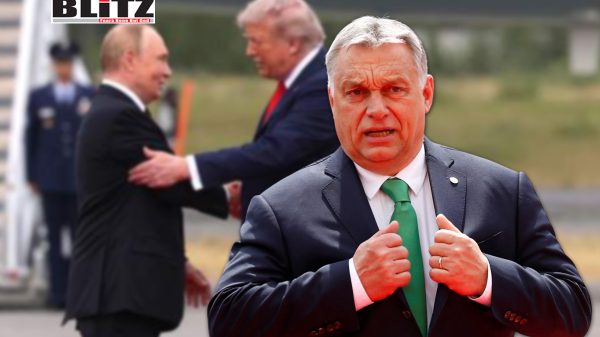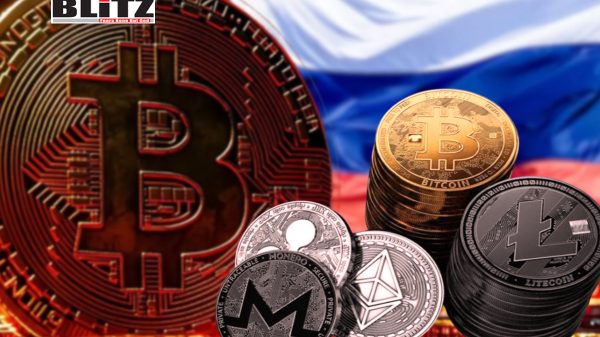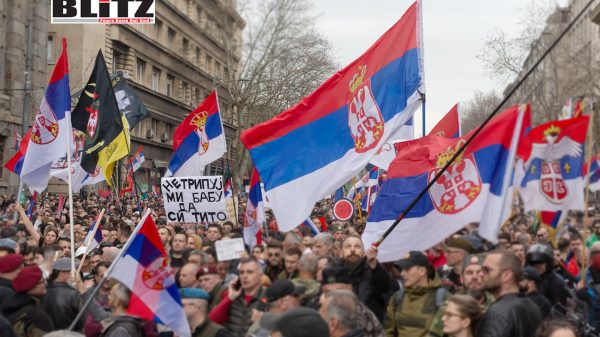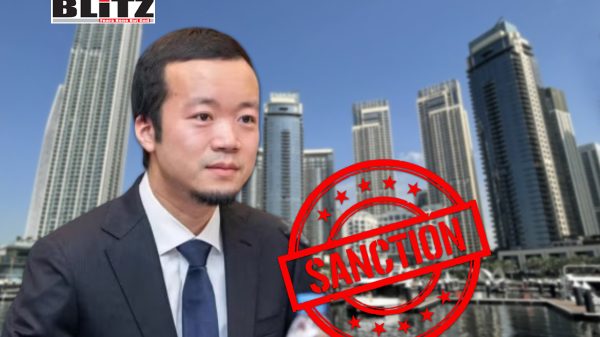‘No kings’ millions rally against Trumps alleged authoritarianism across United States
- Update Time : Monday, October 20, 2025
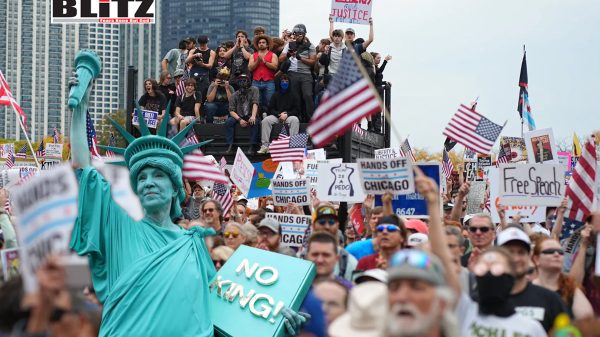
On October 18, 2025, the United States witnessed an extraordinary surge of civic activism, as thousands of rallies under the banner of No Kings spread across the nation. From Times Square in New York to the National Mall in Washington DC, more than 2,600 gatherings united millions of Americans in a coordinated display of dissent against what participants describe as the growing authoritarian tendencies of the Donald Trump administration. Estimates from organizers suggest nearly seven million people took part in this single-day demonstration, making it one of the largest nationwide protest waves in US history.
The No Kings slogan draws directly on the country’s founding ethos: a rejection of monarchy and absolute rule. Organizers describe the movement as a defense of democratic governance, stressing the need to uphold constitutional checks and balances against any drift toward concentrated executive power. “No thrones. No crowns. No kings,” the movement’s website declares, encapsulating the ethos of resistance to perceived authoritarianism.
Participants argue that several actions of the Trump administration-ranging from large-scale military displays to aggressive federal interventions in domestic cities-signal a movement toward unilateral executive authority rather than the accountable, law-bound governance envisioned by the Constitution. For many, this is less a personal attack on Trump than a statement about institutional preservation. Actor-turned-activist Mark Ruffalo, who spoke at an earlier June event, highlighted the stakes: “There is no greater threat to an authoritarian regime than patriotic people-power.”
Despite its serious constitutional framing, the October rallies often took on a festive atmosphere. Marching bands, inflatable costumes-frogs emerged as a particularly popular symbol-and giant “We the People” banners gave the events a street-parade quality, blending celebration with civic urgency. In Washington DC, one veteran attending his first-ever protest described the motivation behind his participation: “I felt compelled after seeing our executive branch treating due process like an optional extra.”
Speakers at the rallies included longtime activists, educators, and former federal employees who resigned in protest against Trump-era policies. One former NIH employee explained her participation by saying she “didn’t see any other way” but to join the demonstration. Protesters highlighted grievances that they believe illustrate the erosion of civil liberties: immigration raids and mass detentions, National Guard deployments in cities without state consent, executive orders bypassing judicial review, and proposed structural changes to govern mental health institutions.
The October wave built upon a prior iteration of the No Kings movement on June 14, 2025, coinciding with Trump’s 79th birthday and the 250th anniversary of the US Army. That earlier surge spanned over 2,100 cities and is estimated to have drawn between four and six million participants. By October, the movement’s reach had expanded significantly, signaling an intensification of public concern about the trajectory of executive power.
A broad coalition supported the protests. Civil-rights organizations such as the ACLU, teacher unions, advocacy networks like MoveOn, and grassroots groups including Indivisible lent organizational and logistical backing. The movement’s diverse base underscores a convergence of social, civic, and political constituencies united by a common concern for constitutional norms.
The protests emerged amid a backdrop of deep political tension: congressional gridlock, looming threats of a government shutdown, ongoing legal challenges to executive actions, and a polarized electorate. Critics of the administration pointed to the use of federal forces in cities without state consent, sweeping immigration enforcement operations, and executive actions perceived to bypass courts and erode civil liberties as warning signs of democratic backsliding.
Reaction from political leaders was sharply divided. Some Republican figures dismissed the protests as extremist or unpatriotic. House Speaker Mike Johnson labeled them “hate America rallies,” framing participation as unaligned with traditional expressions of patriotism. In contrast, Democratic leaders embraced the demonstrations. Bernie Sanders, speaking in Washington DC, warned that “the American experiment is in danger” and encouraged citizens to actively safeguard democratic principles.
Scenes from across the nation captured the movement’s scale and diversity. In New York’s Times Square, tens of thousands waved signs reading “Nothing is more patriotic than protesting” and “Resist Fascism.” In DC, veterans and teachers marched near federal buildings holding a massive Constitution banner, urging the Senate to uphold accountability measures. Along the West Coast and in the Pacific Northwest, playful yet symbolic inflatable frog costumes appeared prominently, demonstrating how grassroots humor had become an element of serious protest. Even abroad, solidarity events in major European cities saw expatriate Americans and local allies carry No Kings placards, reflecting the international resonance of the movement.
Organizers’ claim of nearly seven million participants, while difficult to independently verify, points to a watershed moment in US civic engagement. Political analysts suggest that such mass mobilizations can shift public narratives around governance, pressure elected representatives to act, and energize voters, potentially reshaping party coalitions. However, participants expressed a sober understanding of the limits of street activism: many acknowledged that, despite the historic turnout, legislative or policy changes might remain elusive. A French newspaper captured the dynamic succinctly, noting a mixture of “joyful” protest energy and an underlying “sense of powerlessness.”
The Trump administration responded with a mixture of mockery and defensive posturing. President Trump tweeted and shared an AI-generated video depicting himself wearing a crown while piloting a fighter jet over protesters-a pointed yet humorous acknowledgment of the monarchy trope. In a Fox Business interview, he stated simply, “They’re referring to me as a king. I’m not a king.”
Preparations for potential unrest were taken seriously by some Republican governors. Texas Governor Greg Abbott and Virginia Governor Glenn Youngkin authorized National Guard deployments ahead of the protests. Nevertheless, the day’s events remained largely peaceful. By early evening, major cities such as New York and Washington had not reported significant arrests, demonstrating a disciplined commitment to nonviolent civic engagement on the part of participants.
The No Kings wave on October 18, 2025, illustrates both the vibrancy and complexity of modern US protest culture. Blending historical symbolism, grassroots creativity, and political urgency, it reflects an extraordinary mobilization in response to perceived threats to democratic governance. Whether this unprecedented turnout will translate into long-term political consequences remains uncertain, but for one day, millions of Americans collectively reminded the nation that vigilance and civic action are integral to sustaining the republic.





